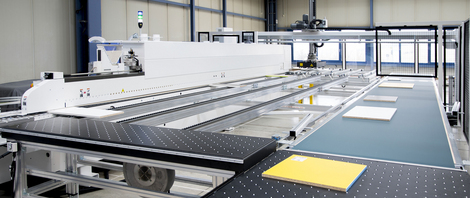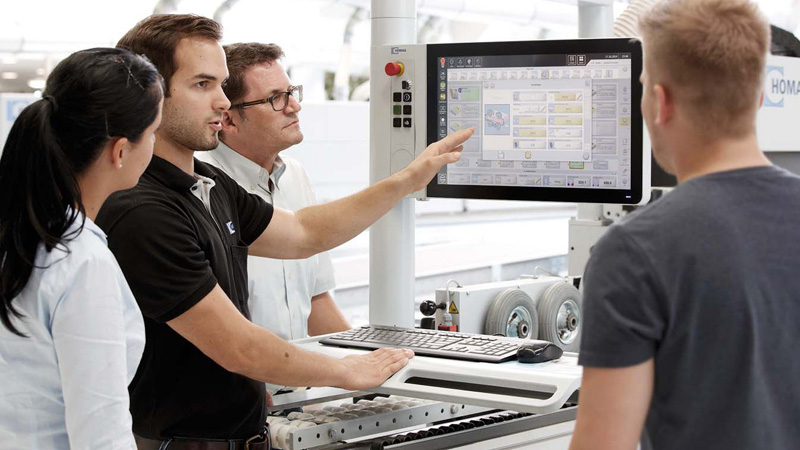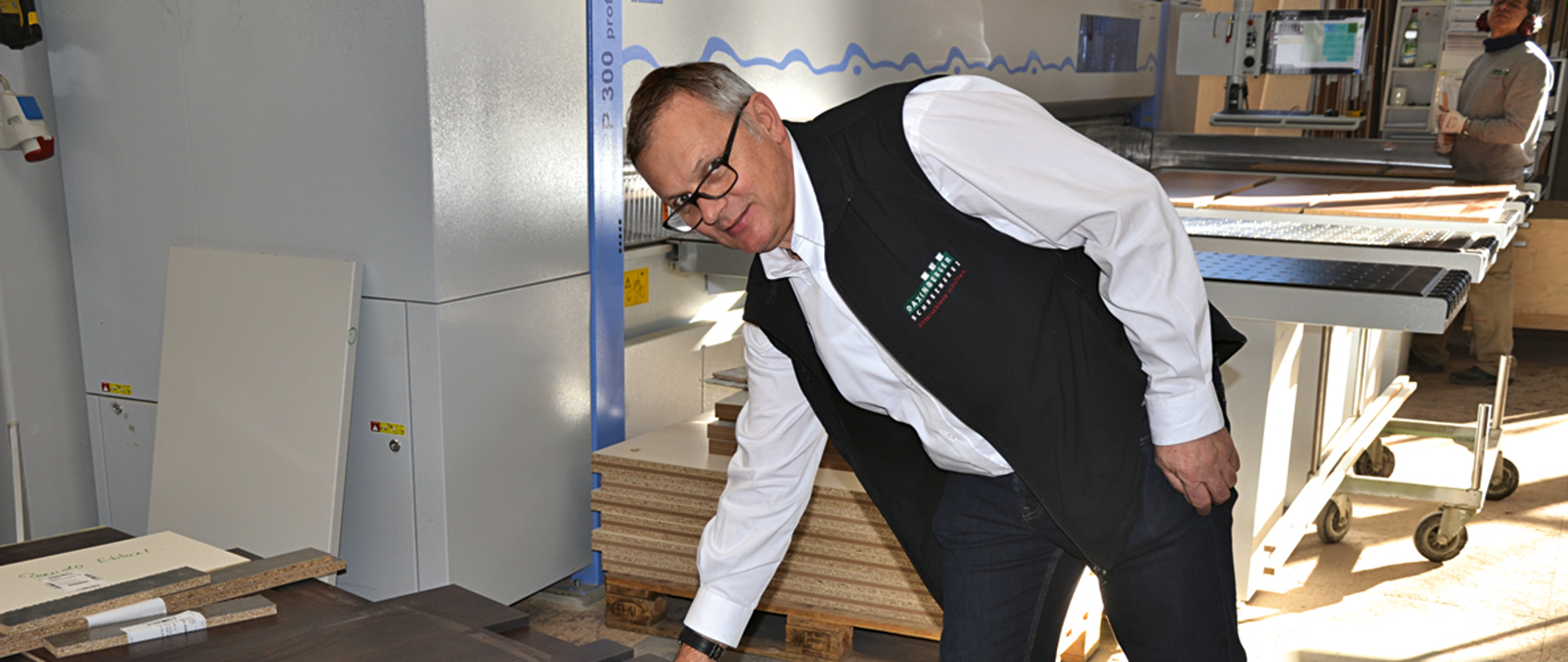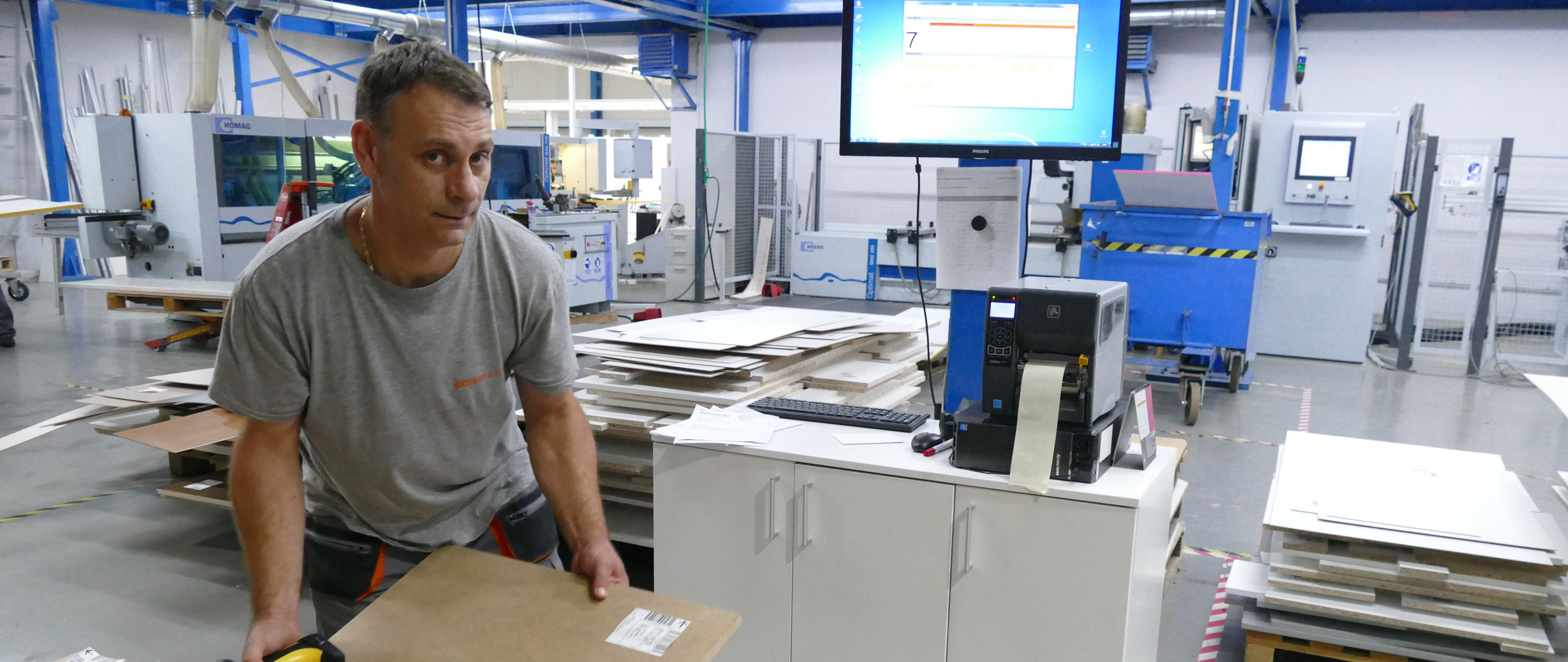Networked Workshop (Part 2): Ready for the Future in Three Steps
The "Industry 4.0" trend is the topic that everyone is talking about in the wood-processing industry. The core aim of this standard is to network machines, electronics and data. But how can trade businesses and medium-sized companies start embracing the concept of networked production? The answer: in three steps.
Has this ever happened to you? You produce a workpiece on a CNC machine, but the program contains an error and the drilling pattern is wrong. Or the program does not exist at all so you have to spend a lot of time and effort programming the machine before you can start production. Or perhaps during assembly you discover that a part is missing meaning that you only realize a short time before the delivery that the order will not be ready on time. If any of these scenarios seem familiar, the decision to network your workshop and therefore embrace the "Industry 4.0" trend is a step in the right direction. In addition, the topic of "Industry 4.0" and thus the digitalization of production processes is being heavily promoted from many different perspectives — be it from the economy, politics, media, competition or end customers. The production systems in the carpentry trade and the furniture industry are facing major changes, making it essential for all companies—regardless of their size—to use the opportunity and engage with the topic of networking.
Every Path Forward Is Different: Better Get Some Good Advice!
Every company is structured differently, has a unique pool of machines, its own software structure, individual processes and various customer requirements to meet. In addition, the internal processes of many companies have developed over time — and frequently these processes are no longer efficient enough in the face of current developments. The consequence: Companies lose their ability to compete. In such cases, it becomes necessary to question the processes in place and the current information flow in order to optimize or re-design these elements from scratch. Despite the differences in the way companies are structured, one thing applies to all: Every company's path forward is different. The following questions are important examples of considerations that ensure the right measures can be put in place for your specific company:
- How does information flow from the office to production, and from order receipt to shipping?
- Which software and IT systems are in use?
- How are parts lists created — manually or automatically?
- Is the current system able to deal with variation, and how are changes to dimensions, colors, decorative elements and materials conducted?
- How is the company organized?
- Where would I like my company to be in five years (strategy)?
An outside perspective often helps when it comes to intelligently and efficiently tackling the topic of Industry 4.0 and therefore the digitalization of production processes without the need for gimmicks. The different areas can be analyzed in cooperation with consulting experts (e.g. the experts at SCHULER Consulting), who can draw on previous experience with trade businesses. The results of these analyses form an excellent foundation from which to embrace the concept of networking. Even small measures can have a significant impact on this path.
Data and Software Are the Keys to Success
Having the right software systems and data generated from these systems are crucial factors. They make launching a networked workshop and networked production process possible as no workshop concept can be operated without data. Any company can set out the right groundwork for success relatively easily. The process of embracing networking for trade businesses can be divided into three levels:
- Networking the office and production
- Optimizing process planning and automating the creation of production data
- Optimizing production processes
Networking the Office and Production
Firstly, the necessary infrastructure must be developed. This involves networking all of the machinery, relocating functions from the workshop to the office (e.g. the CNC programming) and creating a central data storage concept. These measures instantly yield numerous benefits. If the CNC programming is moved to the office, the capacity of the machine is increased. This step also ensures that the data is validated in the office, and only properly formatted data is passed on to the machine. Workpieces are clearly assigned to production data and processes with the help of a label with a barcode. The machines automatically obtain the necessary CNC programs and additional work steps, such as assembly or commissioning tasks, are simplified. At the same time, fewer errors occur as a result of incorrect entries, which, in the worst-case scenario, would otherwise result in a crash and cause machine downtime. If all machines are "networked", the effort needed for data management is minimized and redundancies no longer exist. The CNC programs are saved centrally on the server, allowing new programs or changes to be available instantly on all machines. The throughput time for each order is also reduced, which can be a great advantage in a competitive market.
From the Customer Request to the Production Order
The optimization of IT processes during work preparation is the focus of phase two. The key question is: "How do you get from the customer request to your production data?" The basic requirement for efficient production of customer-specific items is that the customer order is recorded in the IT system in a graphically, commercially and technically clear and distinct manner, meaning that all requirements are fulfilled for creating a parts list and a CNC program (drilling, contour trimming, etc.). The industry system delivers all data for each part to ensure consistent processing along the entire process chain (cutting, formatting, edging, sanding, drilling, fixture positioning, installation). This is achieved by using an industry system or a CAD|CAM system (e.g. woodCAD|CAM from HOMAG eSOLUTION). A system of this nature provides a more efficient configuration for work preparation and reduces the number of manual steps. Production throughput times also become shorter, since complete production information—wood list, label, CNC programs, drawings—is available for all of the elements being manufactured. Errors and unnecessary queries are avoided too.
Optimizing the Production Processes
In the future, the organization of production will be increasingly supported by software: from production planning and capacity planning to order and parts tracking, right through to the organization of reworking, order picking and shipping. This is where the production control systems like WoodFACTORY can be useful, especially in medium-sized businesses. These systems make the production process more transparent. Questions such as "Are all of the components for order XY ready?" and "Do I have enough capacity to process the order?" can always be answered in real time. The component becomes a smart workpiece — all of the relevant information about this item can be retrieved at any time, and every component is always available at the right workstation at the right time. This arrangement allows reworking or commissioning tasks to be organized in the optimum manner too.
The Right Software
If new software is introduced, it is best for this to happen in small steps so that the company and employees have the chance to get used to it. There are systems available on the market that have a modular design. A relational database that contains the data for all the modules is supplied with these systems. The various modules can be implemented on a step-by-step basis, ensuring that the associated costs and familiarization time remain manageable.
Correct Organization of the Workshop
The most efficient companies are those that look into logistics and ask themselves: "Are the necessary materials and auxiliary materials at the right place at the right time?" or "How is the workshop organized?" If you decide to use a production control system such as WoodFACTORY, the data flow is consistently and clearly organized during production. Using this system, you can create supply lists for every workstation or machine, which are then used to make materials from the warehouse available for further processing. You can also see whether all parts in an order are present at any time when packaging parts (flat pack, deconstructed furniture) or assembling cabinets. If the furniture is packaged, a sticker is automatically created for the purpose of clearly identifying the package in subsequent processes (e.g. during loading and delivery). A production control system ultimately enables the status of each part to be tracked during production. The system shows where the part is located, what needs to be reworked and when the exact delivery date to the end customer will be.
Understanding Networking as an Opportunity
Every company has the opportunity to prepare itself for the future today — irrespective of its size. We are going through a period of intense change. Without networking or the correct software and an appropriate data flow, it will only become more difficult over time to produce in a fast and efficient manner. This becomes even more relevant as competitors also develop and exert increasing pressure from a global perspective. Whether it happens in the short term or long term, it will not be possible to compete with shorter delivery times, increasing quality requirements, greater cost efficiency and growing price pressure if you keep using old systems and processes. Embracing the concept of networking is easier than you think. Networking obviously brings with it the need for change, but it also offers great opportunities. And the best time to tackle this topic is now!






